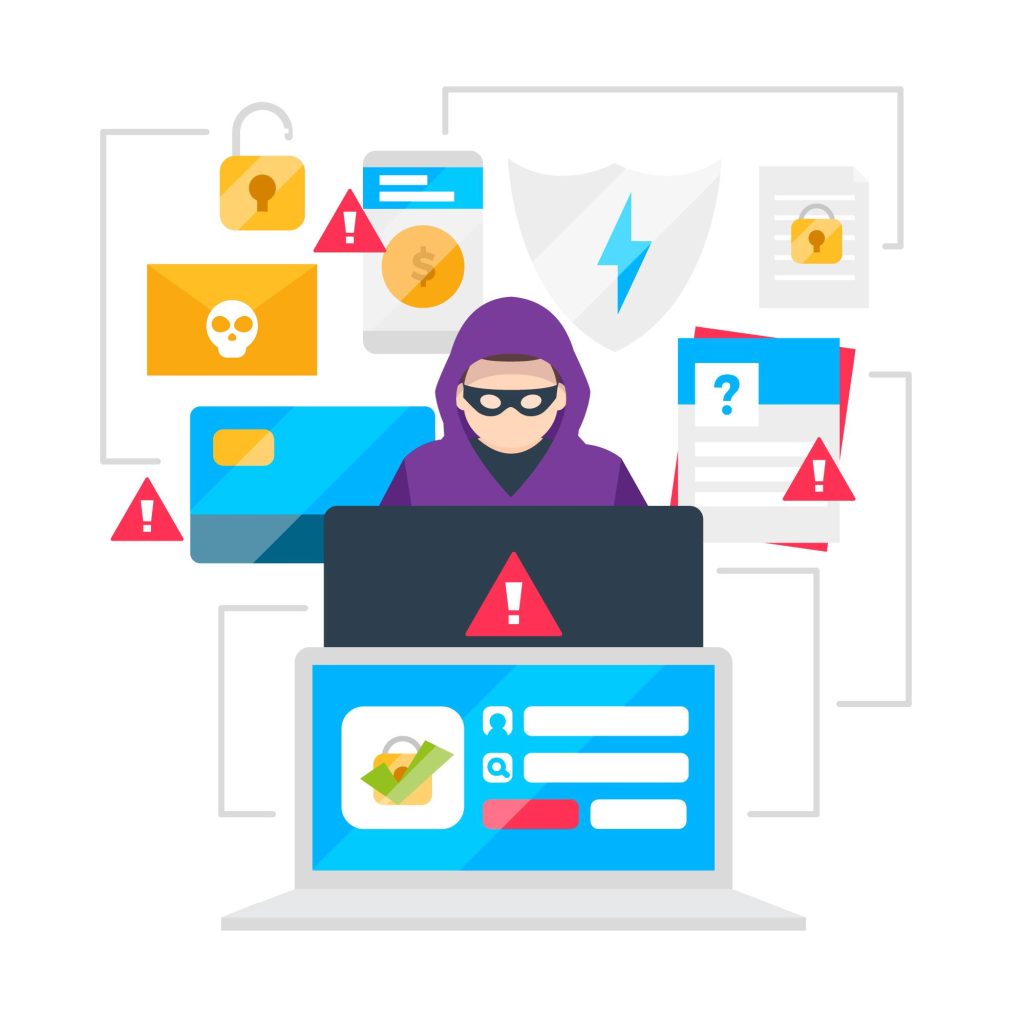In today’s era, as we are growing digitally so are the cybersecurity attack cases. The digital era has both pros and cons but today we will specifically focus on cons. The consequences of these attacks can be devastating, leading to data breaches, financial losses, and reputational damage. Nowadays a thief can steal from you right under your nose and you wouldn’t know similarly a cybercriminal can hack your system and you can’t say.
Do you know how many businesses might have been attacked right now when you were reading the first paragraph? According to a source, nearly 4000 new cybersecurity attacks occur every day. Every 14 seconds a company falls victim to a ransomware attack!
There are cases where the companies get attacked even after every kind of precaution and pre-planned strategy. How? Imagine you are leaving your house, fully secured, you locked the door, double-checked everything and when you felt everything was fine, you left the house after locking the door. But, halfway through, you realize you made one mistake. You forgot to lock your balcony and by the time you reached your house, your house was fully robbed, except for your dog who was sleeping soundly in his world.
Pretty amusing? This short story was for your understanding. Replace your house with your company’s system and your balcony with the broken link/ loophole. The cybersecurity team, after working day and night, checks regularly, but even after that,t the system gets hacked and you aren’t able to do anything.
1. Weak Passwords
Using weak or easily guessable passwords is like leaving your front door unlocked. Cybercriminals can effortlessly crack common passwords, gaining access to sensitive information. To bolster your security, ensure that passwords are complex, and 12 characters long. Additionally, regularly updating passwords, can enhance security by generating and storing unique passwords for each account. Encouraging the use of complex and longer passwords is a necessity.
2. Outdated Software
Running outdated software is like using a lock with known vulnerabilities. Cybercriminals actively seek out these weaknesses to exploit. Software updates often include security rules and regulations that protect against threats. Regularly updating all software, including operating systems, applications, and security tools is crucial to close these security gaps. Enable automatic updates wherever possible to ensure you are protected without needing to remember to check updates.
3. Lack of Multifactor Authentication (MFA)
Relying solely on passwords for account security is a significant risk. Multifactor authentication adds an extra layer of protection by requiring a second form of verification such as email confirmation or biometric data like fingerprints or facial recognition. Implementing MFA can drastically reduce the likelihood of unauthorized access even if passwords are compromised.
4. Phishing Susceptibility
Phishing attacks trick individuals into divulging sensitive information or downloading malware. Phishing can lead to credential theft, financial loss, and malware infections. Educate yourself and your employees to recognize phishing attempts by looking for signs such as misspellings, generic greetings, and suspicious links. Always verify the authenticity of unsolicited communications before clicking links or providing information.
5. Unsecured Networks
Ensure your business networks are secured with strong encryption and passwords. Avoid accessing sensitive information or conducting financial transactions over public networks whenever possible.
6. Inadequate Backup and Recovery Plan
Without proper backup data loss from ransomware attacks or hardware failures can be catastrophic. Regularly backup important data and develop a recovery plan to ensure you can quickly restore operations during a cyberattack. Regularly testing your backup and recovery procedures is necessary to ensure they work effectively. A layered backup strategy including Continous Data Protection can help minimize data loss and downtime.
7. Unrestricted Access Privileges
Granting access to unnecessary users can lead to unauthorized actions and data breaches. Implementing the principle of least privilege ensures that users only have access to the information and systems necessary for their roles.
8. Neglecting Employee Training
Employees are often the first line of defense against cyber threats. Regular training on cybersecurity best practices can help prevent accidental data breaches and ensure employees can recognize and respond to potential threats. Training should cover topics such as password security, recognizing phishing attempts, safe internet practices, and the importance of regular software updates. Encourage a culture of security awareness within your organization, where employees feel empowered to report suspicious activities without fear of reprisal. Continuously update training materials to address emerging threats and evolving best practices
Conclusion
By taking these steps, you not only protect yourself but also contribute to a safer digital environment for everyone. Cybersecurity is a very big responsibility, and by working together, we can build a more secure and resilient digital world. Investing in cybersecurity measures today can save you from significant losses and headaches in the future.
Cybersecurity is an ongoing process that requires continuous monitoring and proactive measures. By addressing these common vulnerabilities, you can significantly reduce the risk of attacks and protect your sensitive information. Remember, the best defense against cyber threats is a combination of strong technical measures and informed, vigilant users.
Visit DataGalaxy for more insights.
FAQ's
1. How do Cybersecurity attacks occur?
Cybersecurity attacks occur through various methods such as exploiting software vulnerabilities, social engineering, and network infiltration.
2. What are the consequences of a Cybersecurity attack?
Consequences can include data breaches, financial losses, operational disruptions, and reputational damage.
3. What should you do if your organization suffers a Cybersecurity attack?
If the organization suffers a cybersecurity attack, then the immediate steps that you should take are to first isolate the affected systems, notify IT security teams, and follow incident response protocols to mitigate damage.
4. What is the importance of Cybersecurity Policy?
Having a cybersecurity policy outlines protocols and procedures to protect an organization’s information assets and ensure all the employees adhere to best practices.
5. What role does employee awareness play in preventing cybersecurity attacks?
Businesses can prevent cybersecurity attacks by implementing strong security measures such as firewalls, antivirus software, regular updates, and employee training.

